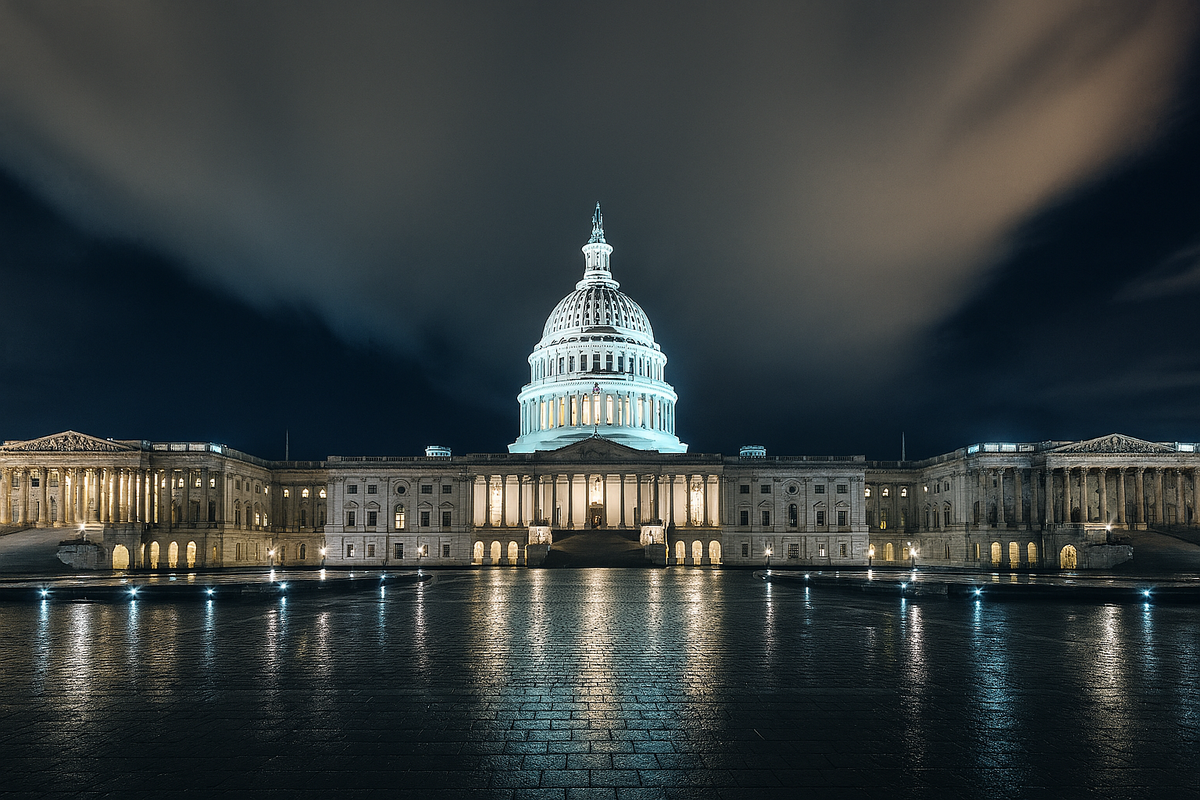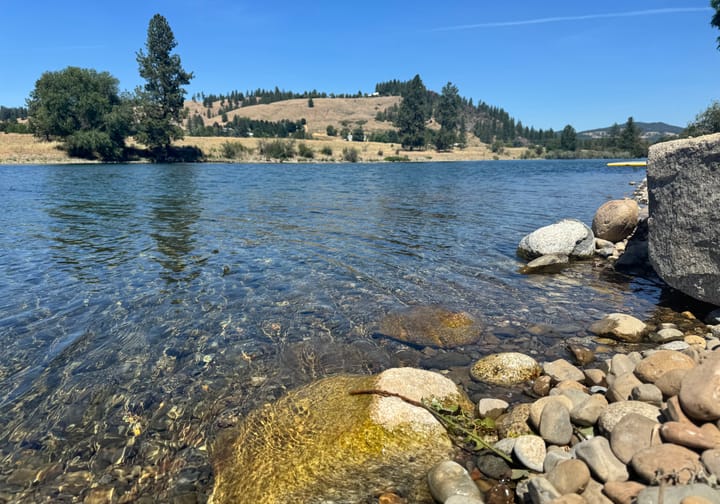The Plot They Almost Pulled Off
When Congress tried to slip a “judicial gag rule” into H.R. 1, it nearly succeeded. Section 70302 would have blocked courts from enforcing rulings against the President — and Rep. Baumgartner helped it get there.

For decades, toxic waste flowed into the Columbia River. Millions of tons of sludge and heavy metals contaminating tribal waters, farmland, and fish. It took years of legal action to force a cleanup. But under one quietly inserted provision of H.R. 1, that fight might never have happened. Most people never heard of Section 70302. That was the point.
When the "One Big Beautiful Bill" (H.R. 1) passed through the House Judiciary Committee, it carried a clause that could have radically altered the balance of power between the courts and Congress. Section 70302 was obscure by design; it was never announced in a press conference, never debated in public hearings. It was tucked deep in the 1,000-page bill, buried in the fine print that governs federal judicial authority.
Had it survived, this provision would have denied federal judges the power to enforce their own rulings unless plaintiffs posted a financial bond upfront, potentially in the millions. Even a clear legal victory would mean nothing if the plaintiff couldn’t afford to “pay for enforcement.” The intended effect? Impunity, not justice, for polluters, political allies, and powerful actors who expect the courts to look the other way.
Among them: Donald Trump, who faces more than 170 active court orders across the country. Had Section 70302 remained in the bill, it would have shielded Trump from any enforcement action.
The Purpose Was Clear
Section 70302's alignment with Trump’s war on what he calls the “weaponized” judiciary was unmistakable. The provision targeted the very judges who had blocked his immigration bans, environmental rollbacks, and regulatory delays during his first term, and who have continued rejecting his authoritarian tendencies into his second.
Its legislative architect was Judiciary Chair Jim Jordan. But its fiercest champion came from Washington’s 5th District: Rep. Michael Baumgartner.
Baumgartner’s Vote and Voice
Baumgartner didn’t just vote for H.R. 1. He helped shape it. As a sitting member of the House Judiciary Committee, he reviewed and advanced the bill with Section 70302 intact. Fellow Republican Congressman Mike Flood of Nebraska later admitted that he was unaware that Section 70302 was in the bill, adding that had he known, he would not have voted for it.
Baumgartner's public statements at the time suggested clear ideological alignment with the provision’s intent. On May 13, 2025, during a Ripon Society panel, he invoked a state-level example to justify limiting judicial authority. He lamented his inability to override a court ruling that favored the Washington Education Association over his own agenda while a state senator:
“Our teachers’ union had bought off all our judges and had a court order going on.”
— Ripon Society Panel, referring to McCleary v. State and the Washington Supreme Court's enforcement of public education funding
This wasn’t hyperbole. It reflected Baumgartner’s longstanding belief that courts should not enforce constitutional limits on government. In 2016, he even proposed a Washington State Constitutional amendment that would have nullified the McCleary decision by giving the legislature exclusive control over defining and funding education, a direct challenge to judicial oversight. With that learned experience from his time in Olympia, his determination to increase Trump's executive authority is clear.
“I think the idea that you can get a radical activist judge in one district jurisdiction that can stop activities across the entire country, is a real threat to our constitutional system… If every radical judge in any very far left wing entity is able to stop an entire agenda that the people voted for, it’s just--you just can’t run a republic like that.”
-- Michael Baumgartner, Jason Rantz Show
These aren’t isolated comments. They are consistent with a broader far-right effort to discredit the judiciary, especially federal judges who issue nationwide injunctions. Section 70302 was designed to silence those judges.
Why It Was Pulled
Just a few days before H.R. 1 was signed into law, Section 70302 was struck from the 'Big Beautiful Bill' by the Senate Parliamentarian, because the provision violated the Byrd Rule regarding budget reconciliation. Since the section didn't relate to spending or revenue, it couldn’t survive a vote under Senate rules.
The Warning
This was not a fluke. Section 70302 reflects a deliberate strategy: disable the courts before they can interfere with political power. It’s a strategy rooted in Trump’s own interests, echoed by his allies in Congress, and channeled through rising figures like Baumgartner.
The clause may be gone for now. But its purpose, shielding powerful actors from judicial consequences, remains very much alive.
The question isn’t whether they’ll try again. It’s whether the public will notice next time.
The Local Damage They Were Willing to Cause
If Section 70302 had survived, the cost wouldn’t just be abstract. It would fall directly on the communities that rely on the courts to hold polluters accountable, communities like the Colville Tribes in Eastern Washington and farmers in the Palouse.
In 2004, Joseph Pakootas, a member of the Confederated Tribes of the Colville Reservation, became the lead plaintiff in a historic environmental case. The target: Teck Cominco, a Canadian smelter that had dumped more than 10 million tons of toxic waste into the Columbia River.
Thanks to federal law, specifically, the Comprehensive Environmental Response, Compensation, and Liability Act (CERCLA), Pakootas and the Tribes were able to sue. They didn’t have to post a bond. They didn’t need millions upfront. They just needed the law. And they won. The courts ordered Teck to begin environmental cleanup and compensate the communities they harmed. Cleanup and compensation are still ongoing in 2025.
But under Section 70302, that pathway to accountability might have been blocked. Future CERCLA cases could be dismissed or unenforceable unless the plaintiffs, often Tribes, rural residents, or farmers, could front enormous bond amounts. The victory that secured cleanup of the Columbia River might never have happened.
A Pattern ... Not a Glitch
The Teck Cominco case wasn’t the only example of communities relying on the courts to hold polluters accountable. In 2023, Yakima Valley farmers joined with environmental groups to stop nitrate contamination from two industrial dairy operations. Their lawsuit led to a court order ensuring clean water for nearby families. No bond was required.
In 2024, a federal judge in Eastern Washington issued another injunction under the Safe Drinking Water Act against separate dairies, a suit joined by the DOJ and EPA themselves. Had Section 70302 become law, the enforcement of that order would be dependent on the Trump Administration's willingness to post a sizable bond. If it chose not to intervene, the dairies could keep polluting.
This is the world Section 70302 would create: one where justice is contingent on money, and impunity follows those with power.
What Baumgartner Was Willing to Sacrifice
Baumgartner’s support for Section 70302 wasn’t just a nod to Trump. It was a decision to dismantle the very legal protections that communities in Eastern Washington rely on: tribal water rights, clean rivers, the ability to fight pollution when government fails, and even workers’ rights in disputes with corporate employers.
These aren’t abstractions. They’re real people. And their rights were nearly sacrificed because their Congressman backed a hidden clause that would have stripped them of justice.
What This Reveals About the Larger Project
What happened in H.R. 1 wasn’t just local neglect. It was part of a national strategy; one that seeks to weaken the courts not by accident, but by design.
Project 2025, the governing blueprint spearheaded by the Heritage Foundation and other Trump-aligned groups, outlines a sweeping plan to centralize executive authority and dismantle institutional checks on presidential power. While much of its focus is on purging the civil service, what it calls the “deep state”, it also takes aim at the independence of the judiciary and federal agencies.
One of the most forceful arguments comes from Russ Vought, Director of the Office of Management and Budget under Trump, and author of the foundational section of the blueprint, called 'Executive Office of the President'. He argues that the President must establish complete control over the executive branch.
“The great challenge confronting a conservative President is the existential need for aggressive use of the vast powers of the executive branch to return power—including power currently held by the executive branch—to the American people. Success... will require a rare combination of boldness to bend or break the bureaucracy to the presidential will …” - Project 2025
And in another section of Project 2025: 'Central Personnel Agencies: Managing the Bureaucracy', the handbook for an authoritarian president claims that the president’s power is absolute:
“As the U.S. Constitution makes clear, the President’s appointment, direction, and removal authorities are the central elements of his executive power.” - Project 2025
A Playbook for Control
This philosophy of bending the bureaucracy to “the presidential will” helps explain the Judiciary Committee’s attempt to include Section 70302 in H.R. 1. The provision would have limited federal judges’ ability to block executive action, advancing the very vision articulated in Project 2025.
Section 70302 mirrors this logic. If courts can’t enforce their orders, they can’t check executive abuses. The courts wouldn't be able to restrain unlawful mandates or protect vulnerable communities from government overreach. They become performative: judicial window dressing.
What’s unique about 70302, among the more overt efforts to relinguish unilateral power to the president, is that it nearly became law.
Baumgartner’s vote helped bring it to the floor. His rhetoric shows he understood its purpose. And the silence from him that followed? This is what should alarm us most.
Because if the public doesn’t understand what was attempted here, nothing will stop them from trying again.
Next time, it may not be a buried clause. It may be a standalone bill, announced as reform, passed in broad daylight.
And if that happens, the last firewall between the rule of law and political domination may quietly disappear.
